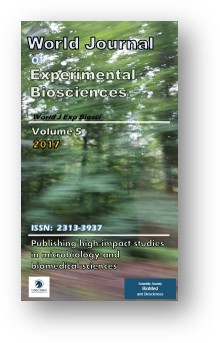Use Multiplex PCR Technique for Distribution the Accessory Gene Regulatory Polymorphisms among Baghdad Clinical Staphylococcus aureus Isolates and its Correlation to Cassette Type
Keywords:
S. aureus, agr, SCCmec, Quorum sensing system (QS), Virulence factors, pvl, tsst-1, MRSA, MDR.Abstract
Accessory gene regulator (agr) operon is the central transcriptional global regulatory system of Staphylococcus aureus; the agr locus is perceived as a part of the center genome of the S. aureus chromosome, responsible of controlling the virulence factors and cell-wall components. Considered the important quorums sensing system of S. aureus, agr activity is critical for skin and soft tissue infections; depending on its reported role in human and animal infections through the up, down-controlling S. aureus infection advancement since up-control of virulence factors via agr is vital for disease advancement in some cases of intense infection, such infective endocarditis, skin and soft tissue infections for that there is global concern to develop drugs targeting this quorum sensing system. The objective of the study is typing the accessory genes regulator polymorphisms in Baghdad clinical isolates and their relation with the bacterial cassette types. Eighty seven isolates were collected from different sources and characterized by original biochemical tests and there susceptibility were tested toward several types of antimicrobial agents then they were applied to molecular diagnosis to confirm characterization of S. aureus isolates by nuc gene with agr types, SCCmec types also several virulence factors and mec gene. It was found all isolates were community-acquired harboring SCCmec type IV and one isolate had SCCmec type V also about 68.96% of the isolates were MRSA, most of isolates 75.86% were agr type I. Most MRSA isolates that isolated from Baghdad hospitals were CA-MRSA considering to they; Harboring SCCmec type IV and V., carried accessory gene regulator (agr) type I., Have pvl gene, showed low susceptibility toward Vancomycin antibacterial agent, Also the studied isolates shown high similarity depending on their cassette type and accessory gene regulator polymorphisms. The most common virulence factors in local clinical isolates of S. aureus were clfA gene (61.6%) followed by pvl gene (32.55%), hlg gene (31.39%), icaA gene (27.58%), tsst-1 gene (24.41%) and eta gene (17.44%).
Downloads
Published
Issue
Section
License

This work is licensed under a Creative Commons Attribution-NonCommercial-NoDerivatives 4.0 International License.
All articles in the World Journal of Experimental Biosciences are published under the terms of the Creative Commons Attribution 4.0 International License (CC BY 4.0), which permits unrestricted use, distribution, and reproduction in any medium, provided the original work is properly cited.






